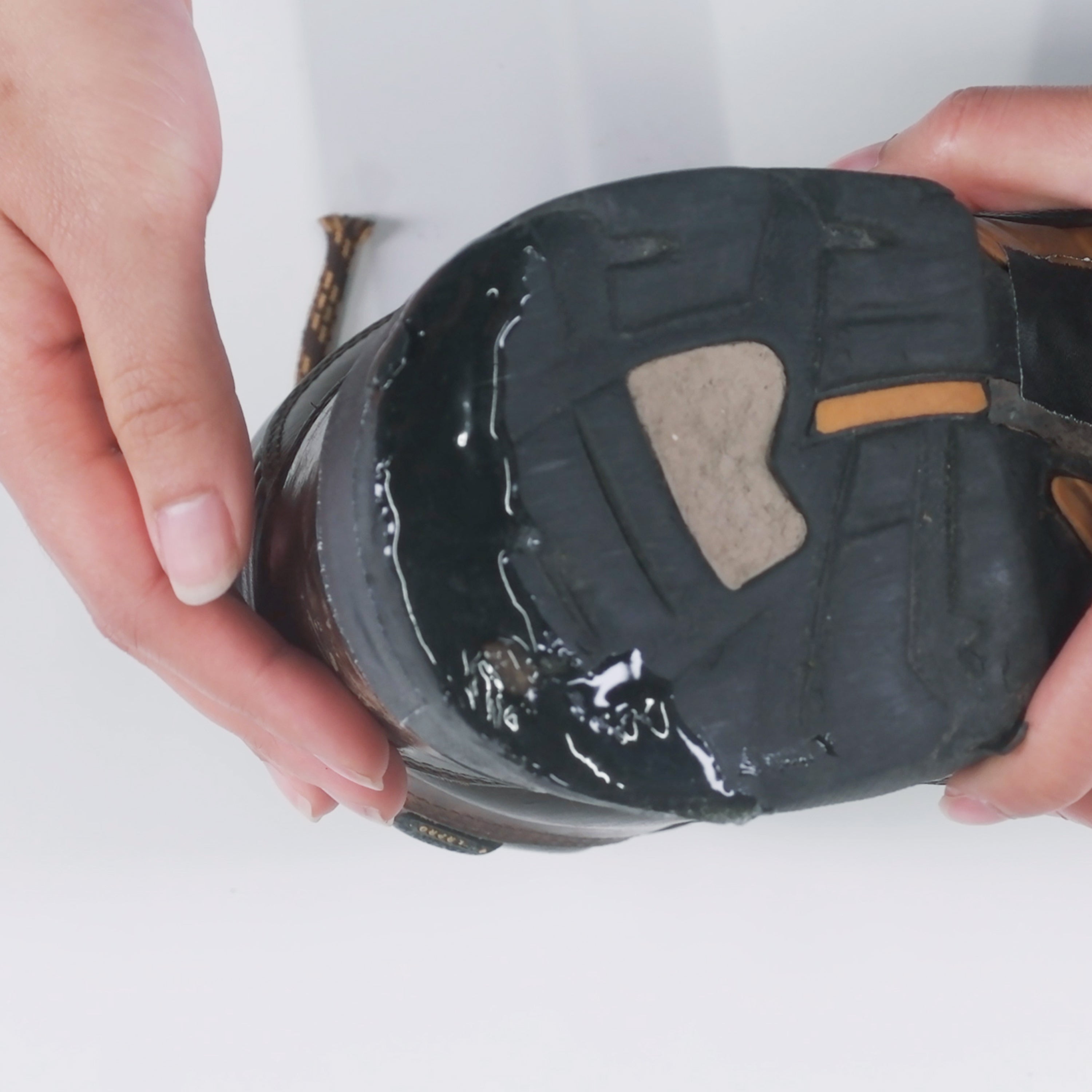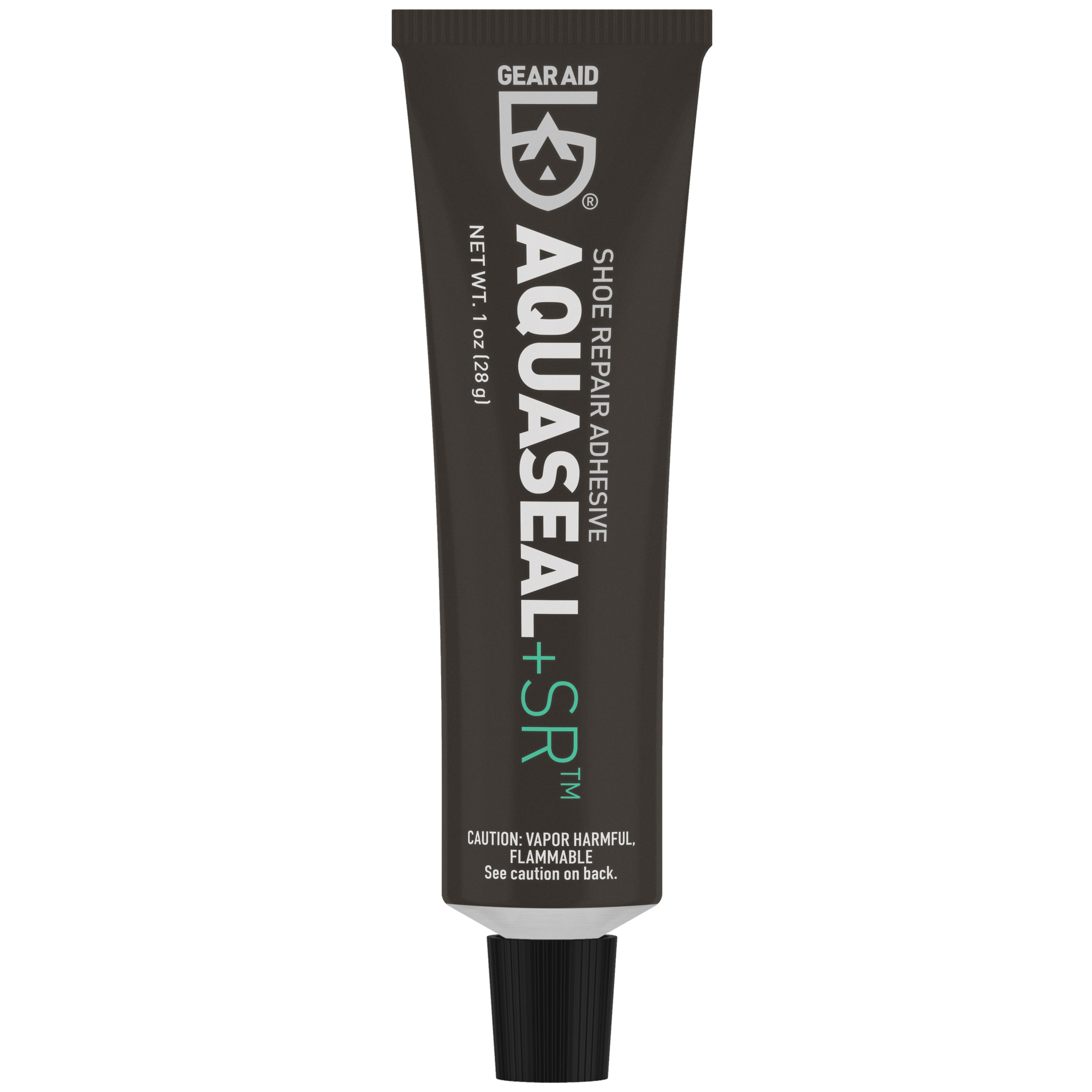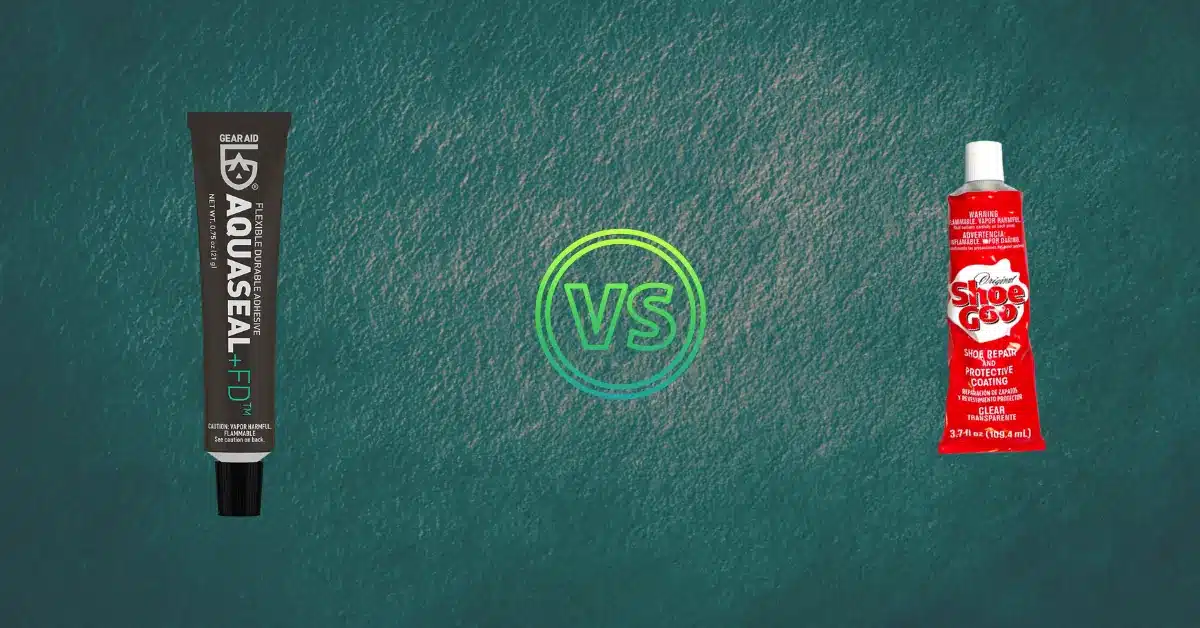Aquaseal and Shoe Goo are both popular adhesive products used for repairing and waterproofing shoes and other items.
Contents
Aquaseal Vs Shoe Goo
Composition
Aquaseal and Shoe Goo are two popular products used for repairing and waterproofing footwear. Understanding the composition and ingredients of these products is essential to determine their suitability for specific applications.
Ingredients Of Aquaseal
Aquaseal is a waterproof adhesive and sealant specially designed for outdoor gear and footwear repairs. This versatile product is composed of:
- Urethane
- Thickening agents
- Curing agents
- Solvents
Ingredients Of Shoe Goo
Shoe Goo, another popular repair adhesive, contains a different set of ingredients, including:
- Isoprene rubber
- Fillers
- Solvents
- Adhesion promoters

Application
When it comes to repairing and waterproofing your gear, Aquaseal and Shoe Goo are two popular choices. Knowing how to apply these products is essential for achieving the best results. Let’s explore the application process for both Aquaseal and Shoe Goo.
How To Apply Aquaseal
Applying Aquaseal is a straightforward process that can help you seal seams and repair tears in various outdoor gear items such as tents, waders, and footwear. Follow these steps for best results:
- Clean the damaged area thoroughly to ensure proper adhesion.
- Apply a thin, even layer of Aquaseal over the damaged area using the built-in applicator or a small brush.
- Allow the Aquaseal to cure for at least 8 to 12 hours in a well-ventilated area before using the gear.
How To Apply Shoe Goo
Shoe Goo is specifically designed for repairing and protecting footwear. Here’s how you can apply Shoe Goo to extend the life of your favorite shoes or boots:
- Ensure that the surface of the footwear is clean and dry before applying Shoe Goo.
- Using the cap puncture, pierce the tube and apply a small amount of Shoe Goo directly onto the damaged area.
- Use a cotton swab or popsicle stick to spread the Shoe Goo evenly and smoothly over the damaged area.
- Allow the Shoe Goo to dry for at least 24 hours before wearing the footwear.
Drying Time
When it comes to repairing shoes or outdoor gear, the drying time of adhesives like Aquaseal and Shoe Goo can make a difference. Let’s compare the drying times of these two popular products.
Drying Time Of Aquaseal
Aquaseal typically takes 12-24 hours to fully dry and cure, providing a strong, flexible bond. It’s important to allow sufficient time for Aquaseal to set before using the repaired item.
Drying Time Of Shoe Goo
On the other hand, Shoe Goo tends to dry within 24 hours, making it a quicker option for immediate fixes. However, it may require additional curing time for a fully secure bond.
Durability
Aquaseal and Shoe Goo are both highly durable adhesives that provide long-lasting protection for footwear. Whether repairing a tear or reinforcing weak spots, both products offer excellent durability, making them popular choices for shoe repair and maintenance.
Their waterproof nature adds an extra layer of protection, ensuring the longevity of your favorite shoes. Durability is a crucial factor to consider when choosing a product for repairing and prolonging the life of your shoes.
In this article, we will compare the durability of two popular shoe repair adhesives: Aquaseal and Shoe Goo. Both adhesives are renowned for their ability to withstand wear and tear, but let’s dive deeper into the longevity of each to see which one offers superior durability in different situations.
Longevity Of Aquaseal
Aquaseal is a trusted name in the world of shoe repair adhesives, and its longevity is one of its key selling points. Designed specifically for outdoor gear and footwear, Aquaseal offers exceptional durability that can withstand tough conditions and heavy use.
Aquaseal’s long-lasting formula forms a flexible and protective barrier that effectively seals and bonds shoe materials, ensuring a strong and durable repair. Whether you’re fixing a worn-out sole or patching up a tear, Aquaseal’s adhesive properties hold up remarkably well over time.
With Aquaseal, you can expect your repaired shoes to maintain their durability and integrity even in demanding environments. Its resistance to water, abrasion, and impacts means that your repaired shoes will continue to perform at their best, providing you with long-lasting wear.
Longevity Of Shoe Goo
Shoe Goo, on the other hand, is a popular choice for shoe repairs among DIY enthusiasts. While it may not offer the same level of durability as Aquaseal, Shoe Goo still provides a reliable and cost-effective option for extending the life of your shoes.
Shoe Goo’s unique formula is designed to repair and protect footwear, providing a strong and flexible bond that can withstand regular use. While it may not be as resilient as Aquaseal, Shoe Goo still offers sufficient durability for everyday activities and general wear and tear.
It is important to note that Shoe Goo may not be as effective in extreme outdoor conditions or heavy-duty use. However, for casual shoes or minor repairs, Shoe Goo’s longevity is generally satisfactory.
In conclusion, both Aquaseal and Shoe Goo offer commendable durability, but their performance can vary depending on your specific needs. If you require a highly durable adhesive that can withstand challenging conditions, Aquaseal is an excellent choice.
On the other hand, if you’re looking for an affordable option for general shoe repairs and maintenance, Shoe Goo can provide satisfactory longevity. Ultimately, the right choice depends on your intended use and the level of durability you require for your shoe repairs.
Flexibility
When it comes to repairing shoes or waterproof gear, flexibility is a crucial factor to consider. Both Aquaseal and Shoe Goo offer impressive flexibility, but they have slight differences that can make a big impact on your repair needs.
Flexibility Of Aquaseal
Aquaseal’s flexibility is highly regarded in the outdoor and sports industries. It is designed to flex and move with the materials it is applied to, ensuring a durable and long-lasting repair.
Whether your shoes bend, twist, or stretch, Aquaseal remains flexible, maintaining the integrity of the repair even under pressure. One of the reasons for Aquaseal’s exceptional flexibility is its unique formulation.
It is made with a flexible urethane-based compound that allows it to adhere seamlessly to different surfaces, including leather, fabric, rubber, and more. This flexibility is particularly beneficial for repairing footwear or gear that experiences continuous movement or strain.
Flexibility Of Shoe Goo
Shoe Goo, on the other hand, also offers impressive flexibility for repairing shoes and outdoor gear. It is specially designed to withstand bending, twisting, and stretching, ensuring that your repairs can endure constant movement without cracking or peeling.
The flexibility of Shoe Goo is primarily due to its rubber-based formula. This unique composition allows Shoe Goo to mimic the natural flexibility of shoe soles and other materials, making it an excellent option for repairing footwear.
Moreover, Shoe Goo’s flexibility extends beyond just shoes. It can also be effectively used on other gear, such as wetsuits, tents, and even skateboards.
Regardless of the material or application, Shoe Goo remains pliable, ensuring your repairs can withstand the demands of your active lifestyle. In summary, both Aquaseal and Shoe Goo offer remarkable flexibility for repairing shoes and outdoor gear.
Aquaseal’s urethane-based compound ensures flexibility across different surfaces, while Shoe Goo’s rubber-based formula mimics the natural flexibility of various materials. Ultimately, the choice between the two will depend on the specific repair needs and materials you are working with.

Waterproofing
Aquaseal and Shoe Goo are both effective waterproofing products for shoes. While Aquaseal provides a durable and flexible seal, Shoe Goo offers excellent adhesive properties. Choose the one that suits your specific needs for long-lasting waterproofing.
Waterproofing is a crucial factor in selecting the right adhesive for your outdoor gear. Let’s compare Aquaseal and Shoe Goo in terms of their waterproofing abilities.
Waterproofing Ability Of Aquaseal
Aquaseal forms a watertight bond that effectively seals leaks in footwear or outdoor equipment like tents or clothing.
Waterproofing Ability Of Shoe Goo
Shoe Goo provides water-resistant protection, but may not be as effective as Aquaseal in sealing larger or more persistent leaks.
Cost-effectiveness
When it comes to fixing your outdoor gear or shoes, choosing the right adhesive is crucial. Two popular options that come to mind are Aquaseal and Shoe Goo. In this comparison, we will assess their cost-effectiveness, helping you make an informed decision.
Price Comparison Of Aquaseal And Shoe Goo
Let’s start by comparing the prices of Aquaseal and Shoe Goo. Generally, Aquaseal tends to be slightly more expensive compared to Shoe Goo.
However, the price difference may vary depending on the retailer and the quantity purchased. For budget-conscious consumers, this price variation is worth considering.
Value For Money Comparison
When it comes to assessing the value for money, factors such as the effectiveness, longevity, and overall performance of the adhesive must be taken into account.
Aquaseal is recognized for its durability and flexibility, making it suitable for repairing outdoor gear. On the other hand, Shoe Goo is commonly used for repairing shoes and providing excellent grip. Both products offer good value for money based on their specific uses.
Frequently Asked Questions On Aquaseal Vs Shoe Goo
What Can I Use Instead Of Aquaseal?
An alternative to AquaSeal is Gear Aid Seam Grip, a durable and waterproof adhesive for outdoor gear repairs.
What Is The Best Glue For Shoes?
The best glue for shoes is a strong and flexible adhesive designed specifically for footwear repair.
Look for a product that is waterproof and suitable for the material of your shoes for maximum durability and longevity. Examples include Shoe Goo, Gorilla Super Glue, and Gear Aid Aquaseal.
Is Shoe Goo A Strong Adhesive?
Yes, Shoe Goo is a strong adhesive that is well-known for its durability and strong bonding capabilities. It’s a popular choice for repairing shoes and other rubber or leather items due to its robust adhesive properties.
Can I Use Shoe Goo To Repair Waders?
Yes, shoe goo can be used to repair waders effectively, providing a durable and waterproof solution.
Conclusion
For DIY repairs, both Aquaseal and Shoe Goo prove effective. Consider your specific needs when choosing between the two.
Whether repairing gear or footwear, each product has its strengths. Experiment to see which works best for your projects. Make informed choices for lasting results.

